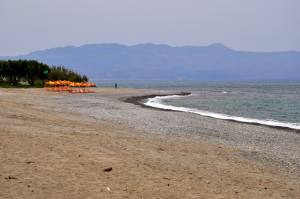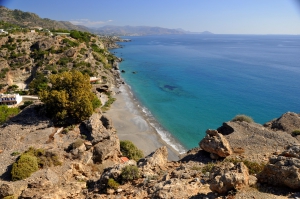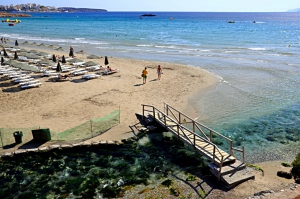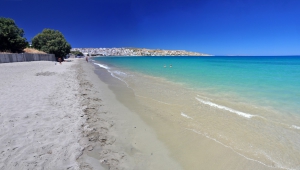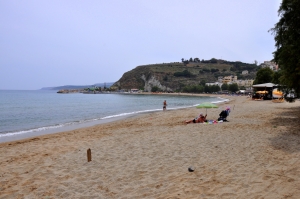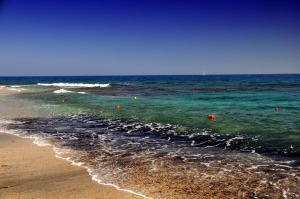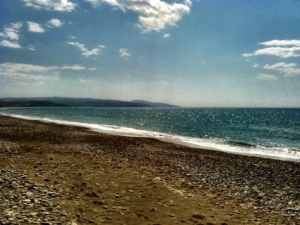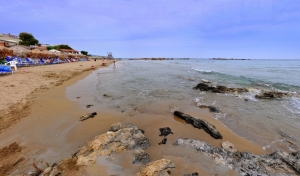Gerani is a small coastal village located 13 km west of Chania, located between Maleme and Platanias. It is situated in a verdant valley with olive and citrus groves.
Agia Fotia, one of the favorite beaches of all Cretans, is located 45km southeast of Agios Nikolaos and 12km east of Ierapetra. It is a small bay formed at the mouth of a small stream that descends from the surrounding mountains. The settlement takes its name after the local Church of Agia Fotini (or Agia Fotia). The area is hidden in plane trees and tamarisks, while the bay is surrounded by high mountains and cliffs that create a magic scenery.
Almiros Beach is located 2.5km south of Agios Nikolaos and is the most popular beach in the city. It is shaped near the exit of the Almiros River, which empties on the south part of the beach. Next to the beach, the protected wetland of Almiros hosts several rare birds, towering eucalyptus trees, reeds, and some palm trees.
Sitia is the easternmost city on Crete and is located 64km east of Agios Nikolaos. The wider area of Sitia province hosts several small beaches where you can enjoy the sun and the sea. However, some who prefer to stay close to town, can visit the long city beach.
Kalives is a seaside resort located 19km west of Chania, on the southern coast of Souda Bay. This small village is built on a fertile green valley, where three rivers flow. The village's name (i.e. “Huts” in Greece) seems to come from the huts that were built by farmers in their fields, to spend the summer nights.
The peaceful resort of Anisaras is located 21km east of Heraklion, west of Cape Sarandaris. The area is now full with big hotels, which offer primarily all-inclusive services. In front of the hotels, there are small sandy beaches with rocky seabed. All beaches are well-organized with umbrellas and sun beds, which are offered for free to the customers of the hotels.
Kokkinos Pirgos (i.e. Red Tower) is located 67km west of Heraklion and close to the town of Tymbaki. The name is taken after the tower that was there and was built with reddish soil. The purpose of this tower at this point is still unknown. It is the seaside village of Timbaki, home of the port of the region and developed touristically.











